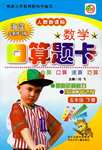题目内容
Before graduating from a Zhejiang provincial university, Li Chun went to
Li was not familiar with the transportation in
After several weeks’ travelling, Li has now made herself familiar with Shanghai’s transportation system and has also gradually mastered the interviewing skills necessary when doing her many independent interviews. This is the first fieldwork practice of Li. Although she used to work in the Students’ Union at university and has the experience of being a tutor(a private instructor), a student for many years, Li seldom leaves the limits of school to engage in more social activities. However, as a senior, she faces the coming graduation and job-hunting problems, and believes that it is time she plans for her future. She also thinks that although journalistic fieldwork doesn't suit her special major training very much, it doesn’t matter, for a student is supposed to learn more about the ability of self-study from university education. Consequently, she feels OK if at present or in future she is required to engage in jobs that don’t have such close friendships with her major. Because life and work is already a process of continuous study.
41. Which of the following may be the best title for the passage?
A. Practising fieldwork---a must to get a high-paid job
B. Practising fieldwork---a bridge for school to society
C. An unforgettable experience for a student journalist
D. Hardwork leads to success
42. The underlined word “credentials” means ______.
A. application B. direction C. introduction D. qualification
43. The primary purpose of the passage is to ______.
A. give college students some advice on social practice
B. praise Li Chun for her fieldwork practice
C. encourage college students to learn more about the ability of self-study
D. warn college students of the job-hunting problem
44. According to the passage, Li Chun _______.
A. doesn’t regret choosing journalistic fieldwork
B. felt it impossible to make herself trusted by the interview
C. couldn’t do her work well as a student journalist
D. often took part in social activities when working in the Students’ Union at university

 培优口算题卡系列答案
培优口算题卡系列答案 开心口算题卡系列答案
开心口算题卡系列答案 口算题卡河北少年儿童出版社系列答案
口算题卡河北少年儿童出版社系列答案NEW YORK (AP) — The investigation into the disappearance of 6-year-old Etan Patz has gone through decades and countries, from basements to rooftops and seemingly everywhere in between.
No one has ever been charged criminally — and the little boy with sandy brown hair and a toothy grin was declared dead in 2001.
This week, the six-year-old boy who went missing from the Soho area of New York City in 1979 is back in the news. Police and the FBI are investigating a possible lead into the 33-year-old case of Etan Patz, the first missing child to appear on the side of a milk box.
The child disappeared on the way to school on the morning of May 25, 1979. It was the first time he was allowed to walk the two blocks to the bus stop alone.
A tip seemed to have led officials to the basement of a building on the corner of Prince and Wooster streets, about a block and a half from where Etan had lived with his family.
The name Etan Patz has become a hot topic on Twitter as people weigh in on the case. Shirley Brady noted: “As mom to a 6 years old in Soho, it’s still held out by locals as cautionary tale (警示故事).” Another wrote, “Boy who disappeared on his way to school in 1979 has been REOPENED! Crazy.” One wondered, “Why is FBI and NYPD searching for a kid that disappeared in 1979?”
Good question. This is a case that Stuart Gra Bois, as an assistant U.S. lawyer under Rudolph Giuliani, followed for years. It became the most famous missing-person case in New York City, turned a nationwide spotlight on missing children, and created headlines around the globe. No one was ever stated guilty of the crime.
The case led to the creation of National Missing Children’s Day, marked on May 25, the day the blond-haired, blue-eyed child went missing.
The case has even pointed to a suspect, charged with child molester (猥亵者) Julio Antonio Ramos, who is currently in prison. Patz’s babysitter had been dating the man, and Ramos did know the kid, but has denied taking him away.
New evidence in the case suggests another suspect who lived in the apartment at the time: a local handyman named Othniel Miller, who gave Etan $1 for helping him the night before the disappearance.
The man’s name had come up in an earlier investigation, but he was a friend of the Patz family, and the NYPD did not follow the lead.
Investigators plan to be at the site, 127 B Prince St., which is now a Lucky Brand jeans store, for the next two to three days to search for human remains. The Associated Press reports that the excavation (挖掘) has been the result of a recently ordered review of the case by Manhattan’s police.
【小题1】We can learn from the first three paragraphs that ________.
| A.The 6-year-old missing boy was found by the side of a milk box |
| B.Police and the FBI have not been following the case of Etan Patz for 33 years |
| C.The investigation into the disappearance of boy has worked fruitlessly for decades |
| D.Etan Patz went missing from the Soho area of New York city in 1979 and died in 2001 |
| A.ignore the case | B.feel stressed on the case |
| C.reopen the case | D.begin to discuss the case |
| A.Local lawyers strongly demanded the reopening of the case. |
| B.The Associated Press reported the result of the review of the case. |
| C.New evidence appeared which led officials to the basement of a building. |
| D.Local people realized the importance of the case without criminal being charged. |
| A.The National Missing Children’s Day was created on May 25, 1979. |
| B.The search for human remains will be carried out at 127 B Prince Street. |
| C.The NYPD didn’t follow the lead of Julio Antonio for he had been dating Patz’ babysitter. |
| D.Othniel Miller, a local handyman assisted Etan and gave him $1 before the disappearance. |
| A.People air the same view about the case on the Internet |
| B.People reject the reopening of the case of the missing boy |
| C.The missing-person case still has a long-lasting influence on people |
| D.Twitter is the only place for people to discuss about missing-person cases |